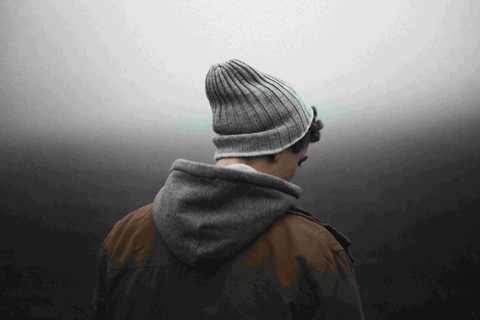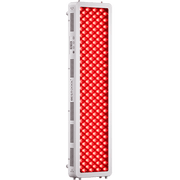For some, winter is a beautiful season, full of festive cheer, gorgeous snow, and activities like sledding and skiing. But for many others, this season also brings the risk of depression. For about 3% of people, this emotional downturn is so severe that they develop a condition called seasonal affective disorder (SAD). SAD is more common in people living in northern latitudes and may be hormone-driven, with a higher incidence in females than males. Postmenopausal women are less likely to develop SAD. Under the influence of the winter blues, those suffering from seasonal depression not only feel sad but also experience:
- Loss of interest
- Unusual tiredness or fatigue
- Insomnia
- There is a tendency to overeat and gain weight
- Poor skin health
- Inability to concentrate
- Feeling hopeless and sometimes even having suicidal thoughts

Is there any way to combat SAD?
Yes, there is, and that is the power of red light therapy (RLT). Many people may not know that human physiology is closely related to light. Our metabolism, mood, emotions, and thinking are all affected by light. While the exact cause of seasonal affective dysregulation is unknown, it is believed to be related to changes in sun exposure and how sunlight disrupts our internal body clock. Light profoundly affects the human body by controlling the 24-hour biological clock in the brain. This biological clock not only regulates sleep and wake cycles but is also involved in regulating digestion, hormone secretion, and other critical physiological functions. Recently, scientists and healthcare professionals have been looking for different ways to cope with seasonal depression. Interestingly, red light therapy has become a popular option that has come into the spotlight! They call it low-level laser therapy (LLLT) or photobiomodulation (PBM), and it's a non-invasive treatment that uses a specific wavelength of red and near-infrared light (660–850 nm) to stimulate body healing mechanisms. Red light therapy (RLT), known for its manifold benefits, emerges as a novel way to combat the winter blues.
Red Light Therapy Breakthrough in SAD Management
Red light therapy is a potential game-changer for managing SAD. It not only fixes skin problems or relieves pain and healing injuries but also shows significant effects in combating depression.
- Enhanced circadian rhythm regulation
Light directly affects the secretion of hormones such as cortisol, which can be used to treat depression. Cortisol is an essential factor in depression, and cortisol has a significant impact on people's behaviour and mood. Red light therapy may help regulate the body's internal clock, which can have a positive effect on sleep patterns and overall mood.
- Increased production of serotonin
Red light therapy may boost the production of serotonin, a neurotransmitter associated with mood control and a sense of well-being.
- Melatonin levels Regulation
Melatonin plays an integral role in inducing quality sleep, produced by our pineal gland, signalling that it's time to rest. An important factor influencing melatonin levels is nighttime exposure to artificial lighting, incredibly blue light emitted by tech devices like smartphones or laptops. Red light therapy normalizes melatonin levels in the body, thereby reducing symptoms of fatigue and drowsiness.
- Anti-inflammation
Red light therapy helps to lower inflammation and oxidative stress, which are the main culprits behind issues such as depression and mood issues. So, using this therapy may give your mind a little boost and make you feel better overall! Additionally, RLT also helps relieve arthritic inflammation and pain, which are common in cold seasons.
- Enhanced Skin Health
Lack of light contributes to poor skin healing ability. RLT improves blood circulation, oxygen delivery to tissues and collagen production. It also helps reduce the severity of skin damage and significantly enhances the body's ability to repair damaged skin by minimizing dry skin, wrinkles, cracks, eczema, etc.

Red Light Therapy Safety of Application for SAD
Preliminary studies show red light therapy can help treat seasonal depression and even depression in general. Harvard Medical School reported the unique benefits of light therapy for seasonal depression and other types of depression. Unlike antidepressants, which can take weeks to work and cause bothersome side effects, it offers a more non-invasive and safe therapy option. Red light therapy is a desirable option for older people, especially those with limited mobility. For those who respond well to red light therapy, depressive symptoms usually improve within a week. Side effects such as eye strain and headaches are uncommon and mild. Don't stare directly into the light - it can damage your eyes. Instead, keep it about 2 feet away from sight. Under the guidance of professionals, when red light therapy is applied correctly, it can help patients achieve better results and reduce the use of medications.
Conclusion
Red light therapy could be an antidote for seasonal depression. It is an alternative to drug therapy and has few side effects. At the same time, studies have shown that the use of red light therapy reduces symptoms in patients with non-seasonal depression. Red light therapy is a new approach to the treatment of non-seasonal depression. Even though many studies have shown that red light therapy has an improved effect on non-seasonal depression, the effectiveness and universality of RLT, especially in older depressed populations, need more research.
References & Citations
[1] Glass G. E. (2021). Photobiomodulation: The Clinical Applications of Low-Level Light Therapy.TheAesthetic Surgery Journal, 41(6), 723–-738. https://doi.org/10.1093/asj/sjab025
[2] Nussbaumer, B., Kaminski-Hartenthaler, A., Forneris, C. A., Morgan, L. C., Sonis, J. H., Gaynes, B. N., Greenblatt, A., Wipplinger, J., Lux, L. J., Winkler, D., Van Noord, M. G., Hofmann, J., & Gartlehner, G. (2015). Light therapy for preventing seasonal affective disorder. The Cochrane database of systematic reviews, (11), CD011269. https://doi.org/10.1002/14651858.CD011269
[3] Cheng, K., Martin, L. F., Slepiaan, M. J., Patwardhan, A. M., & Ibrahim, M. M. (2021). Mechanisms and Pathways of Pain Photobiomodulation: A Narrative Review. The journal of pain, 22(7), 763–777. https://doi.org/10.1016/j.jpain.2021.02.005
[4] Ngoc, L. T. N., Mon, J. Y., & Lee, Y. C. (2023). Utilization of light-emitting diodes for the skin therapy: Systematic review and meta-analysis. Photodermatology, photoimmunology & photomedicine, 39(4), 303–317. https://doi.org/10.1111/phpp.12841
[5] Nussbaumer-Streit, B., Forneris, C. A., Morgan, L. C., Van Noord, M. G., Gaynes, B. N., Greenblatt, A., Wipplinger, J., Lux, L. J., Winkler, D., & Gartlehner, G. (2019). Light therapy for preventing seasonal affective disorder. The Cochrane database of systematic reviews, 3(3), CD011269. https://doi.org/10.1002/14651858.CD011269.pub3
Read More
- How Can Red Light Therapy Affects Your Sleep? – BESTQOOL
- The Benefits of Red Light Therapy – BESTQOOL
- Red Light Therapy Dosing Guide – BESTQOOL
- Red Light Therapy: Skin Soothing Miracle | Quick Results – BESTQOOL
- How To Create A Sleeping Routine For Newborns – BESTQOOL














 Small
Small

 Moderate
Moderate

 Moderate
Moderate

 Moderate
Moderate

 Full
Full



